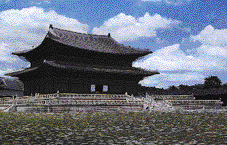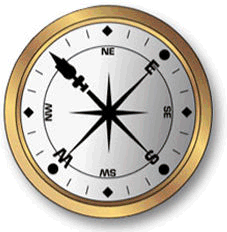|

|
The Joseon-Dynastie (Choson, Chosun)
(1392-1910)
enormous strides were made in arts, science, and technology
during the reign of the fourth monarch,
King Sejong
(1418-1450), a Buddhist. One of the most important development was the
creation of the Korean script,
known as han'gul, which
became widely used in the twentieth century. |
However, after the dead of
King Sejong, the dynasty fell into the hands of lesser men.
In the late fifteenth century the country
began a long decline due to long and bitter struggles and corruption ran rampant.
Farmers suffered from heavy tax burdens imposed by greedy officials and
corrupt landlords. Even worse, Japanese forces attacked
Korea in
1592 and 1597 and Manchu hordes ravaged in 1627 and 1636 the country's economy turning much of the
farmland to waste for years to come. The great Korean commander, Admiral
Yi Sun-shin, of the late sixteenth century, one of the best of
the military leaders in Korea history, destroyed the Japanese fleet with
armed turtle ships.
Christianity and western ideas reached Korea through China in the seventeenth century. Western ships began to approach Korean shores after
1801 demanding trade rights. Korea, which suffered from a series of natural
disaster
including floods, famines, and epidemics was an easy target
allowing Western powers in East Asia in the nineteenth century
to follow their own interests. At the same time, Japan has been forced to open its ports by
Commodore Matthew C. Perry of the United States Navy in 1853.
In contrary, Korea remained dormant and closed itself to all outside contacts.
After a Japanese provocation against Korea in 1875 the Japanese were the first foreign power in recent history
to penetrate Korea's isolation. China failed to come to Korea's aid
allowing the Japanese to
force an unequal treaty on Korea in 1876. He Korean
government split into rival pro-Japanese, pro-Chinese, and pro-Russian factions.
Finally, in 1895, the Japanese minister to Korea arranged the
assassination of the Korean queen causing the Korean king to turn for
support to Russia. To avoid possible
Japanese plots against him the king fled to the Russian legation
in Seoul to conduct the nation's business from there.
Following the first Sino-Japanese War (1894-95),
the victorious Japanese increased 1895 their influence over Korea via the Treaty of Shimonoseki.
The Japanese government dictated to the Korean government various reforms, including the abolition of class distinctions
and
liberation of slaves, the abolition of the ritualistic civil service examination system.
They also introduced a new tax
system.
The rivalry between Russia and Japan
continued in the Russo-Japanese War of 1904-1905, which Japan won.
Russia was forced to accept Japan's "paramount political, military,
and economic interest" in Korea. As a consequence, some months later,
Korea was obliged to become a Japanese protectorate and was
finally annexed as a colony on August 22, 1910.
|


